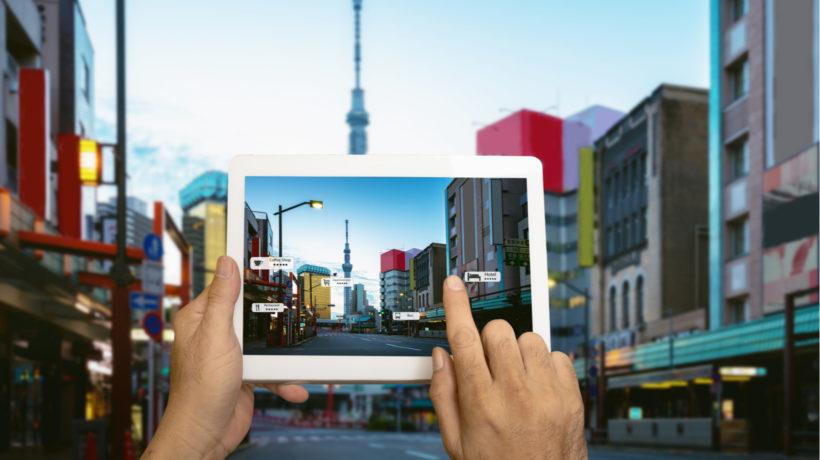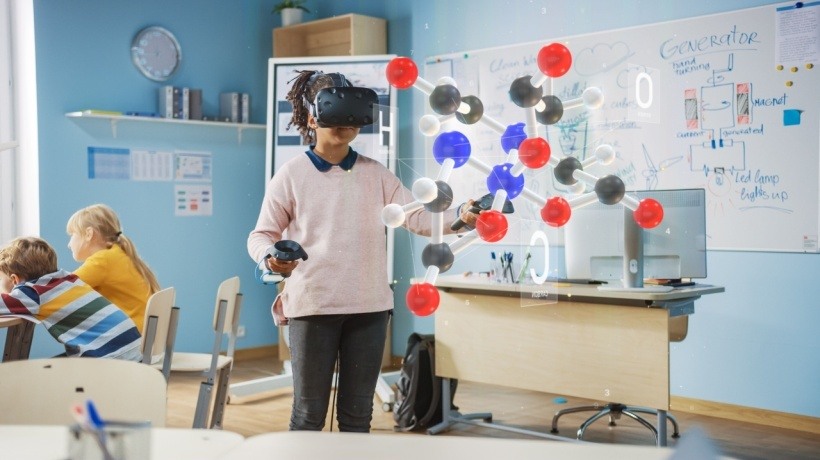7 Augmented Reality Activities To Make Your eLearning Course Really Engaging
Augmented reality is often mistaken for virtual reality. However, virtual reality transports users to another world, while augmented reality blends technology with the real world. Our perception of reality is altered in order to let tech slip through the cracks creating, thereby, an immersive and engaging eLearning experience in real time. Every aspect of the eLearning environment bends itself to meet the needs of the individual, instead of catering to the masses. Here are 7 augmented reality activities that you can add to your next eLearning course.
1. Real World Simulations With Interactive Objects
Real-world simulations are inherently immersive when done correctly. But you can make them even more engaging by adding clickable objects and hot spots. Realistic environments and situations are the basis of this eLearning activity. As such, you should incorporate relatable images, sounds, and processes. At first glance, online learners may think that it's a traditional online demo or tutorial. However, they'll know it's something unique and exciting when the first interactive object appears. They have the power to move items into place, combine different objects, and use simulations to complete the task.
2. High-Risk eLearning Scenarios In Real Time
Augmented reality is a powerful and lifesaving tool in the right hands. Medical practitioners can practice complex procedures without endangering their patients. In addition, machine operators have the ability to master their tools in a safe environment. Virtually any industry that involves risk-taking can benefit from augmented reality scenarios. Best of all, it can be done in real time so that employees experience the same pressure and stress. It mimics every aspect of the real world situation. As a result, employees gain valuable experience, minus the workplace injuries. Every decision they make leads to a different outcome and allows them to see the consequences of their actions.
3. Immersive Stories Starring The Online Learner
Stories are one of the most emotionally compelling tools at our disposal. eLearning professionals can weave tales that draw online learners in and make them feel for the main eLearning character. Just imagine amplifying those emotions by putting online learners into the starring role. Augmented reality books are already using modern technology to immerse readers in fictional environments. However, you can use the same concept for your online learners. This technology uses webcams and digital sensors project images and bring online learners into the story. As is the case with traditional stories, case studies, and examples, create relatable eLearning characters and challenges to enhance the emotional connection.
4. Engaging And Entertaining Serious Games
Augmented reality and games are a perfect pair. In fact, many people were introduced to augmented reality through gaming apps. An example of this is the Pokémon Go craze that's taken the world by storm. Users hunt for fictional creatures in the real world, which are superimposed by the app. They can even take selfies with their favorite pocket monsters while sitting in their living rooms and cubicles. You can use this approach to create immersive and engaging serious games. Instead of fictional creatures, employees can interact with customers and items they typically find in the workplace. Include geolocation features to lead them on a virtual scavenger hunt; complete with clickable objects.
5. Augmented Reality Resource Links That Feature Facts And Stats
Augmented reality click-and-scan technology is already in use today. People can scan a special augmented reality code or trigger object to learn more about the item in question. For example, a chemistry textbook might transport readers to a virtual lab where they conduct exciting experiments. In the process, they learn about chemical reactions and compounds. You can also incorporate augmented reality resource links into your eLearning materials. These markers can reveal interesting facts, stats, and ideas that allow online learners to explore on their own. You might consider creating an augmented reality resource list that features microlearning content. Online learners are able to use the list for just-in-time eLearning support, as the augmented reality activities are bite-sized and easily accessible.
6. Three-Dimensional Learning Models
One of the most innovative uses of augmented reality in eLearning is 3D models and demos. In the past, online learners were able to view static images, diagrams, and charts on their computer screen. Augmented reality activities give them the ability to manipulate three-dimensional visualizations so that they can view it from every angle. They can even interact with hot spots to learn more about the individual components. For example, a clickable 3D diagram of manufacturing equipment highlights the key features and functions of each part. The operators are able to familiarize themselves with the machinery and how to use it properly using their mobile devices. These same principles can be applied to any complicated process, as well. For example, a model that illustrates photosynthesis at a cellular level.
7. Online Group Collaboration Projects That Span The Globe
eLearning augmented reality isn't just for asynchronous applications. In fact, it allows online learners from the world to interact with their peers in virtual settings. This has two powerful uses in online training. Firstly, employees can attend a live corporate eLearning event that features augmented reality activities and environments. For instance, 3D diagrams and clickable triggers. This prevents distractions and keep them fully immersed in the online discussion. The second use is online group collaboration projects. Geography is no longer a barrier, as online learners have the power to share ideas and feedback in a virtual meeting space. They're able to use mobile devices and smart glasses to make the experience even more interactive.
One of the best things about augmented reality is that it allows for practical knowledge application in a dynamic virtual environment. Online learners can go alone or collaborate with peers to enhance their understanding. Use these 5 augmented reality activities in your eLearning course design to provide a rich and tech-centered eLearning experience.
Would you like to use augmented reality headsets and mobile gadgets in your augmented reality strategy? Read the article 7 Ways Wearable Technology Could Be Used In Corporate Training to discover the top ways to improve your corporate eLearning program with wearable tech.








